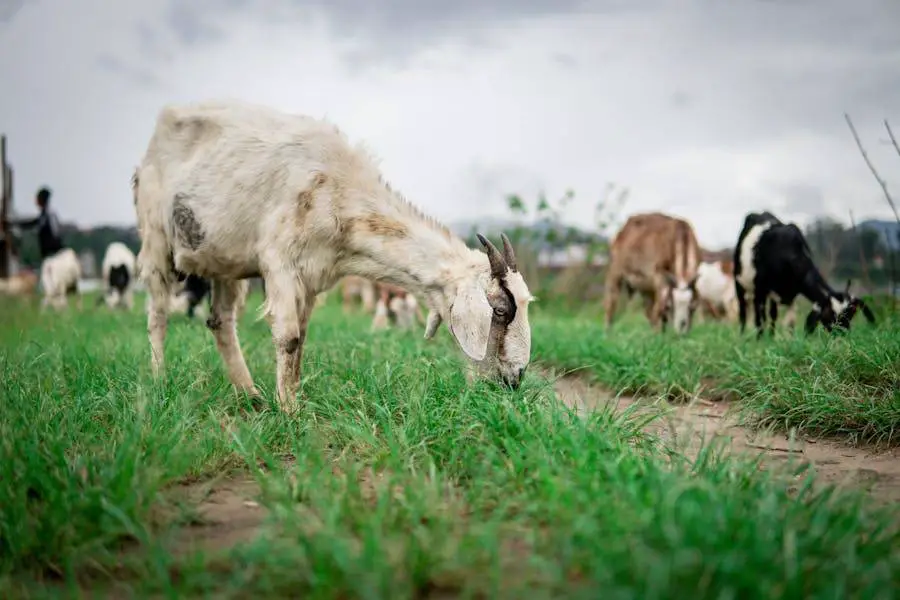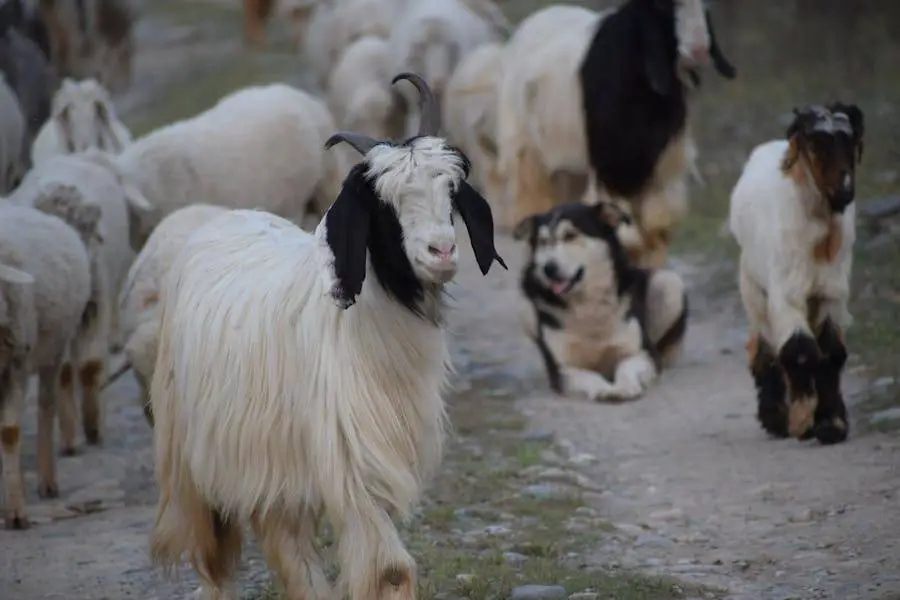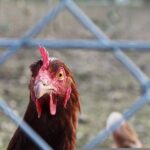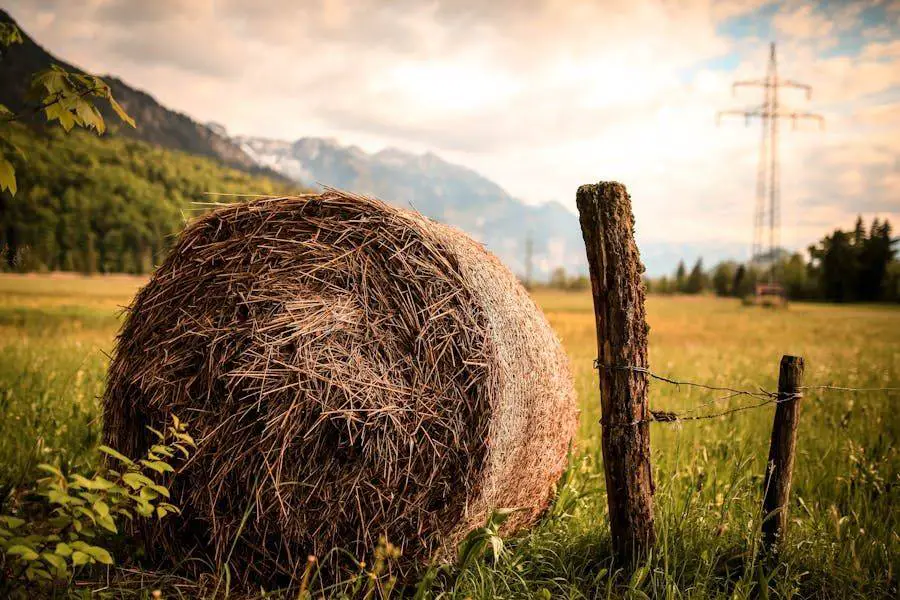Table of Contents
In the realm of sustainable farming and eco-friendly livestock management, keeping goats without a traditional fence has emerged as an intriguing practice.

This approach not only respects the instincts of goats but also aligns with the principles of permaculture and minimal environmental impact.
In this comprehensive guide, we explore a variety of methods to manage and contain goats effectively without relying on conventional fencing solutions.
Understanding Goats and Their Behavior
Natural Instincts and Habits
Goats are inherently curious and social creatures that possess a strong inclination to browse and graze on a variety of vegetation.
They form close-knit groups and establish a social hierarchy within their herd. This gregarious nature dictates their preference for being in sight of their herd mates at all times.
Furthermore, goats are known for their agility and tendency to explore their surroundings, which often leads them to test the boundaries of their confinement.
Challenges of Traditional Fencing
Conventional fences pose several challenges when it comes to containing goats.
Due to their intelligent and explorative demeanor, goats can often find ways to overcome physical barriers, either by jumping over, crawling under, or even breaking through fences.
Additionally, the cost of installing and maintaining robust fencing that can withstand goat behavior is significant, driving small-scale farmers and homesteaders to seek alternative methods of containment.
Electric Netting as a Flexible Solution
Advantages of Electric Netting
Electric netting offers a versatile and effective solution for containing goats without the need for traditional fencing. It is portable, easy to install, and can be adapted to various terrains and layouts.
The psychological barrier created by electric netting is usually sufficient to deter goats from attempting to breach the perimeter, as they learn to associate the boundary with an unpleasant shock.
Setting Up Electric Netting
To successfully employ electric netting, one must start by selecting a netting design specifically intended for goats, characterized by the closer spacing of the electrified wires.
Installation involves laying out the netting around the desired area and securing it with stakes. A reliable electric fence charger is connected to the netting to ensure it is consistently electrified.
Regular checks are necessary to remove any vegetation touching the netting, as this can ground the system and reduce its effectiveness.
Training Goats to Respect Boundaries
Gradual Release Technique
Training goats to respect boundaries begins with confinement in a smaller, secure pen.
Over time, goats are allowed to roam outside the pen for short periods before feeding times, encouraging them to return voluntarily.
Gradually, these intervals can be extended, reinforcing the behavior of returning to the safety of their pen for food and shelter.
Use of Flagging Tape for Boundary Training

Another method involves using brightly colored flagging tape to demarcate the boundaries of the roaming area.
Initially, this is done in conjunction with close supervision and gentle guidance back to the designated area if they wander too close to the boundary.
Over time, goats begin to recognize these visual cues as limits not to be crossed.
Innovative Fencing Alternatives
Portable Goat Fencing Options
Portable fencing solutions provide flexibility in managing grazing areas and can be particularly useful for rotational grazing systems.
Options such as polywire or polytape can be easily reconfigured to create temporary enclosures that guide goats to specific areas without restricting their freedom entirely.
Woven Wire and Other Materials
For those seeking more permanent solutions without resorting to solid fencing, woven wire offers a compromise.
Installing posts at intervals and stretching woven wire between them creates a barrier that is visually open but physically restrictive.
Incorporating strands of electrified wire can enhance the deterrent effect of the woven wire.
Integrating Goats into Permaculture Systems
Designing Goat-Friendly Zones
Incorporating goats into permaculture designs involves creating zones that cater to their natural behaviors while protecting other parts of the property.
For example, areas dense with brush and weeds can be designated as goat-friendly zones, where their browsing helps manage vegetation.
Utilizing Goats for Land Management
Leveraging goats for land management purposes, such as natural brush control, minimizes the need for fencing as goats are directed towards areas where their grazing is beneficial.
This method requires strategic planning to balance the goats’ nutritional needs with the vegetation management goals of the property.
Leash Training for Controlled Grazing
Leash training is a method that involves harnessing and leading goats on a leash to allow them to graze in specific areas without wandering off.
This method requires patience and consistent training but can be incredibly effective, especially for small herds or individual goats.
- Introduction to Leash Training: Begin by introducing the goat to a harness and leash in a familiar, enclosed space. Allow them to get comfortable with the sensation of wearing the harness and being led by the leash.
- Benefits of Controlled Grazing: By directing where your goats can graze, you reduce the risk of overgrazing and promote healthier pasture management. Leash training also allows for targeted grazing in areas that could benefit from natural weed control.
Companion Animals for Goats

Incorporating companion animals, such as guard dogs, donkeys, or llamas, can provide a dual-purpose solution for keeping goats within defined boundaries while also offering protection from predators.
- Selecting the Right Companion: The choice of companion animal should be based on your property’s size, the number of goats, and the prevalent predator threats. Dogs, donkeys, and llamas each have their unique protective instincts and compatibility with goats.
- Training and Integration: Careful introduction and monitoring are essential to ensure the companion animal and goats establish a harmonious relationship. Training for the companion to herd and guide the goats gently back toward safe areas can enhance boundary respect.
Advanced Behavioral Training Techniques
Implementing advanced behavioral training techniques involves understanding goat psychology and utilizing positive reinforcement to encourage goats to stay within designated areas without physical barriers.
- Reward-Based System: Establishing a routine that includes rewarding goats for returning to a specific area or for staying within a set boundary can reinforce desired behaviors. Rewards can include favorite treats, extra petting time, or access to a particularly enjoyed pasture area.
- Consistency and Patience: Behavioral training requires consistency and patience, as goats learn through repetition. Regular practice sessions, combined with clear cues and immediate rewards, will gradually instill the desired behavior of remaining within safe zones without the need for fencing.
By integrating these additional methods into the management of goats without traditional fences, farmers and homesteaders can create a more dynamic, responsive, and sustainable approach to livestock care.
Each method offers unique benefits and can be tailored to fit specific needs, preferences, and property layouts, contributing to the overall well-being and security of the goats under their care.
Addressing Common Concerns
Preventing Escapes
To prevent escapes, it’s essential to meet the goats’ needs within their designated area, including providing adequate food, water, shelter, and social interaction.
Enrichment activities and structures that satisfy their curiosity and climbing instincts can also deter wanderlust.
Protecting Gardens and Sensitive Areas
Protecting gardens and sensitive areas from goats can be achieved through the targeted use of electric netting or temporary barriers during vulnerable periods.
Strategic planting of unpalatable plants along the perimeter may also serve as a natural deterrent.
Conclusion
The practice of keeping goats without traditional fences embraces a thoughtful approach to livestock management that prioritizes animal welfare, environmental sustainability, and resource efficiency.
By understanding goat behavior, employing innovative containment strategies, and integrating goats into broader land management plans, small-scale farmers and homesteaders can create harmonious living spaces for their goats.
This guide serves as a foundation for exploring the possibilities and challenges of non-conventional goat keeping, encouraging an open-minded and adaptive mindset towards livestock management.








